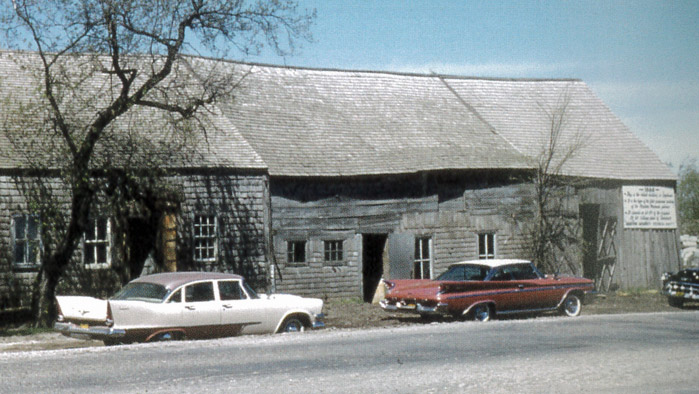With summer coming to an end, we have wrapped up the exploration of the first 18 families that settled Steinbach in 1874. It has been said that ‘people make the place’; however, the opposite can equally be true: a place makes its people. The Steinbach of 150 years ago is emblematic of these two truisms. Steinbach’s location, amongst the bushland and rocks at the far east edge of the East reserve, near the ancient shores of Lake Agassiz and the receding front of the last ice age, its distance from the economic center of Winnipeg and easy rail access, and its lack of significant waterways led to a harsh early existence. These realities demanded innovation, collaboration and a collected effort to carve out a place to thrive.
The Steinbach settlers could not have survived the early days of settlement on their own. Correspondence from the first years after arrival in Manitoba speaks to the heavy reliance on Métis communities for supplies, labour and transportation, as well as the other settler communities that had arrived as early as the 1860s. Steinbach’s survival in the first few years, through the bitter winters and plagues of grasshoppers, and its ability to continue to thrive throughout the decades was driven by the support of these other communities.
The town was laid out along the small stream that determined its north-west by south-east layout. Each of the twenty lots was given access to this water along what is now Elmdale Street, and the lots extended to the village Main Street. Everything was dense bush, with poplar stands in the village, or tamarack and spruce in the swampy land that extended toward the west, to what is today Mitchell. A buffalo trail along the creek provided the only clear route through the area and was frequented by First Nations peoples who passed through the area. Arriving late in the year, the families had barely enough time to clear small pieces of their section and use rough-hewn timber and sod to make Semlin to live in for the first winter. Members of the Clearsprings settlement also taught the villagers to make ditches in the sod around important property to prevent damage from the frequent grass fires in the area.
These harsh realities led many Steinbach residents to regret choosing this plot of land, but these weaknesses became the engine of economic success in the region. Mennonite settlements to the west lacked good access to wood for building, and many of the first families in Steinbach became involved in the lumbering trade. Not only did this work free up more farming land, but also led to the development of skills, machinery and capital that would give Steinbach and its inhabitants an advantage over their neighbours. William Hespeler’s contracting of A. S. Friesen for the logs to build the railroad from Emerson to Winnipeg in 1876 led to a huge boom in income for the fledgling village.
This growing wealth, plus the clearing of more farmland led to two markers of success: The building of a windmill required to mill the large amounts of grain being produced by the community, and the opening of the first store by Klaas R. Reimer. Once again, it was the distance from Winnipeg that facilitated the need for these services, as the journey to city was long and arduous. The community came together with other Mennonite villages to improve road access, with roughly 500 men building an 8-mile road through the ‘St. Norbert Swamp’, completing the project in 6 days. Canals were also dug through the swampland of the East Reserve, drying out previously unfarmable sections of land. Education was not forgotten either, and for the first year classes were held in Rev. Jacob Barkman’s or Klaas R. Reimers semlin until the a school house was built in 1875 on the present site of the T.D. Bank at the corner of Reimer and Main streets.
Within a little over a decade, Steinbach would start to resemble the community emulated here at the Mennonite Heritage Village. While it has grown into something unrecognizable, even from two or three decades ago, there are still strong links to our Mennonite roots, the dedication of its early inhabitants, and the desire for prosperity and peace.




